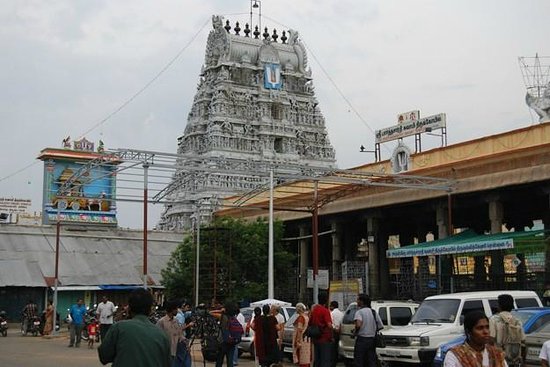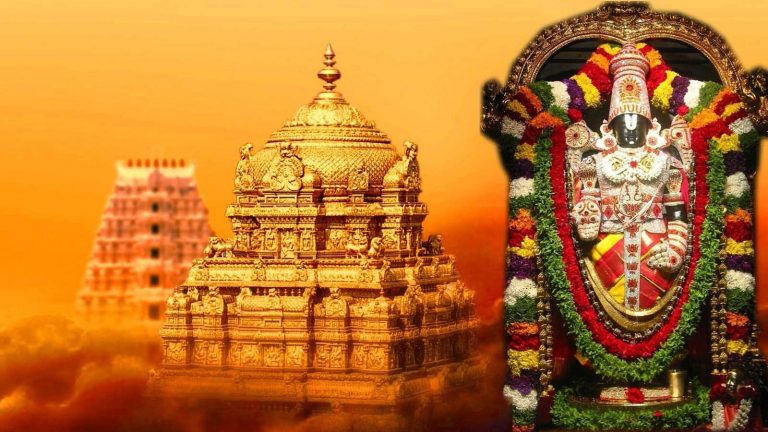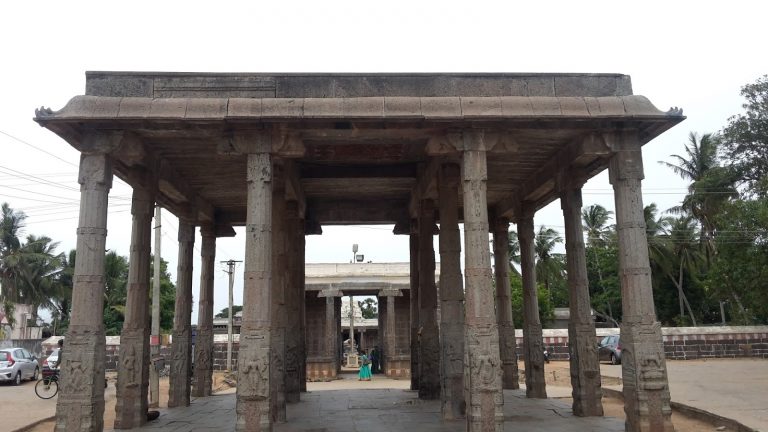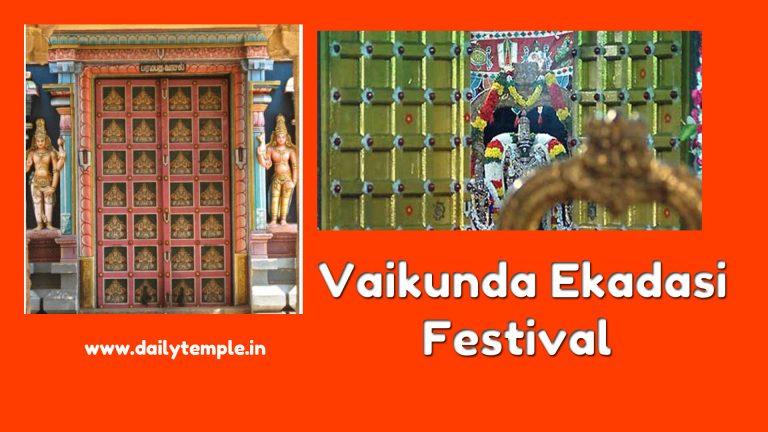Sri Ranganatha Swamy Temple, Srirangam
Sri Ranganatha Swamy Temple, Srirangam
Srirangam is the foremost of the eight self-manifested shrines (Swayam Vyakta Kshetras) of Lord Vishnu . It is also considered the first, foremost and the most important of the 108 main Vishnu temples (Divyadesams). This temple is also known as Thiruvaranga Tirupati, Periyakoil, Bhoologa Vaikundam, Bhogamandabam. In the Vaishnava parlance the term “KOIL” signifies this temple only. The temple is enormous in size. The temple complex is 156 acres in extent. It has seven prakaras or enclosures. These enclosures are formed by thick and huge rampart walls which run round the sanctum. There are 21 magnificent towers in all prakaras providing a unique sight to any visitor. this temple lies on an islet formed by the twin rivers Cauvery and Coleroon.
The temple of Sri Ranganathaswami at Srirangam boasts an historic past of great kingdom and a civilization thousands of years old. The reign of the Pallavas was marked by the creation of a solid religious foundation, for example the encouragement given by the dynasty appears to have contributed to the growth of Aryan institutions in Southern India more particularly in the Carnatic. Cholas reigned for about three hundred years over the Coromandel Coast and the greater part of Eastern Deccan, where they helped an advanced Hindu Culture to flourish.
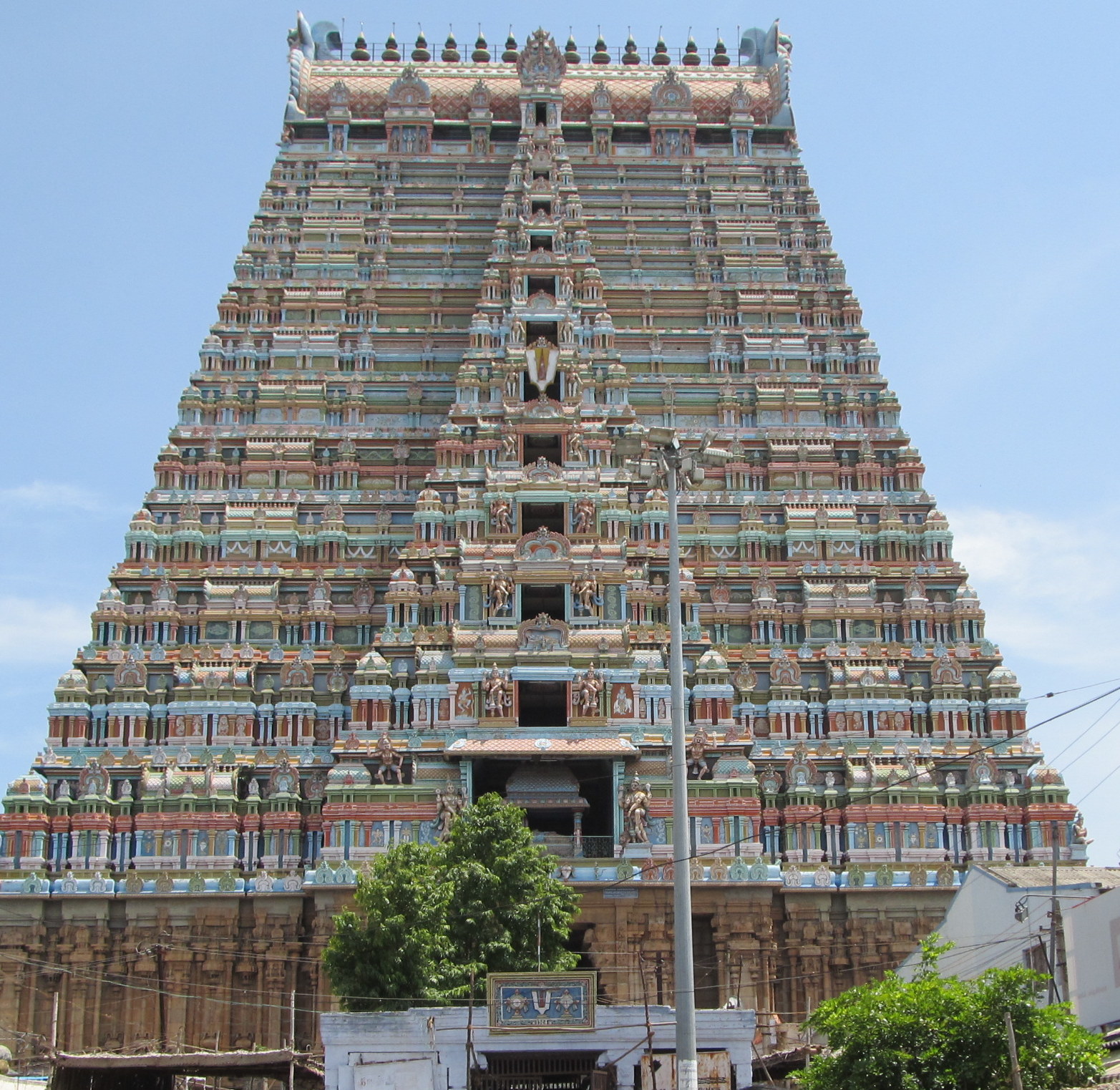
The cholas were defeated in the thirteen century by the Pandyas of Madurai and Hoysalas of Mysore. Hoysalas had taken particular interest in the building of the Temple of Srirangam, leaving behind both the inscriptions and buildings. The Hoysalas were then driven away by the Pandyas in the early part of fourteenth Century. Later, the Mohammedans began frequently raiding the Deccan facing strong resistance from the Hindu Kingdom, which was established in Vijayanagar in 1336. The Kingdom maintained its independence until 1565.
During this time, the Europeans had appeared in the south of India. In the sixteenth century a number of foreign travelers and traders passed through but taking least interest in the hinterland except for the routes it provided for their trade with the Kingdom of Vijayanagar. In 1600, the English East India Company was formed, and 1664 the French company.
In 1680, King Aurangazeb (1658-1707), launched a campaign in western Deccan. After long sieges and a great loss of life, the fortress cities of Bijapur and Golconda fell to him, and the campaign lasted until his death.
In Europe, however, the war of Austrian succession set the English and the French at each other’s throats. Duplex captured Madras (1746), which was given back to the English two years later. The French were forced to surrender in 1752 and Duplex was disavowed and recalled in 1754.
In 1760, a further French attempt, led by Lally-Tollendal, was unsuccessful and the French trading post was dismantled in 1763. From then on, the English Company gradually annexed the whole of the territory of India. Though the French came near to victory, later on they were defeated in 1798 by the English led by Wellessley and who invaded Mysore and in 1799 captured the fortress of Srirangapatnam. There after all of the Southern India came under the supremacy of England. The Carnatic was included in the direct administration of the Madras Presidency where it remained
Pooja Schedule
Sri Ranganathar Sannathi
| Viswaroopa seva | 6:00 – 7.15 |
| Pooja time – ( No Darshan) | 7:15 – 9.00 |
| General Darshan Timings | 9:00 – 12.00 |
| Pooja time – ( No Darshan) | 12:00 -13.15 |
| Darshan Timings | 13:15 – 18.00 |
| Pooja time – ( No Darshan) | 18.00 – 18.45 |
| Darshan Timings | 18:45 – 21.00 |
No Darshan after 21.00 at Sanctum Sanctorum
| Quick Seva | Rs.250/- per head. |
| Viswaroopa Seva | Rs.100/- per head. |
| General Entrance | in All Seva timings |
* Timings are subject to change on Festival Days
Thirumanjanam :
- Devotees may contribute towards Thirumanjanam for shrines of their choice on their prefered date by contributing the below mentioned amount.
- The amount mentioned below is according to the present rate – Changes if any will be updated.
- Contributions for this scheme can be sent along with details to the below mentioned address.
- PrasadamsYour preferred Thirumanjanam booked dates may be altered by the administration due to the prevailing circumstances.
- Intimation will be sent to your email.For more details please send a mail to [email protected].
Payment Modes :
1. You can send Cheque / DD / Payorder / Money order to:Favor of Sri Ranganathaswamy Temple, Srirangam.Payable at Trichy and send it
2. You can Directly Deposit the amount into our INDIAN OVERSEAS BANK account Details for Direct Deposit :FOR ANNADHANAM – USE DIFFERENT ACCOUNT NUMBER Thirumanjanam
The devotees may remit the amount 1 day in advance in the respective shrines to the staff incharge.The temple receipt will be issued immediately.
| Sl.No | Pooja Name | Present Rate | Non-applicable days |
|---|---|---|---|
| 1 | Vairamudi Sevai | 3,500/- | |
| 2 | Hanumar Thirumanjanam | 780 | Non – applicable on Saturdays |
| 3 | Chakarathalwar Thirumanjanam | 1075/- | Non – applicable on Saturdays |
| 4 | Singar Thirumanjanam | 1500/- | Non – applicable on Saturdays |
| 5 | Dhanvanthri thirumanjanam | 1200/- | Non – applicable on Thursdays & Saturdays |
| 6 | Thiruvellarai Arulmigu Pundareekaatcha Perumal Thirukoyil Palipeeda Thirumanjanam | 2500/- |
Do’s and Dont’s:
Given below are a list of Do’s and Dont’s for the attention of pilgrims.
Do’s:
- Worship your Ishta or Kula Deivam before you start for Srirangam.
- Bath in the River Cauvery before you goes to worship Lord Ranganathaswamy.
- Bath and wear clean clothes before you enter the shrine.
- Concentrate on Lord Ranganathaswamy inside the temple.
- Observe absolute silence and chant “Om Namo Narayanaya” inside the temple.
- Respect ancient customs and usages while at Temple and promote religious sentiments among co-pilgrims.
- Deposit your offerings in the Hundi only.
- Keep the temple premises Clean.
- Please leave your Electronic gadgets like Cell phones, Calculator, Camera and footwear etc. before entering the temple.
Dont’s
- Don’t carry jewellery or cash.
- Don’t eat non-vegetarian food.
- Don’t consume liquor or other intoxicants.
- Don’t smoke.
- Don’t approach touts for accommodation and darshan.
- Don’t wear footwear in and around the premises of the temple.
- Don’t buy spurious prasadams from street vendors.
- Don’t come to Temple for any purpose other than worshipping the Lord.
- Don’t rush in for Darshan but take your turn in the queue.
- Don’t enter the temple, if, according to custom or usage, you are prohibited to enter.
- Don’t encourage beggary.
- Don’t waste water and electricity.
- Don’t allow strangers into the rooms.
- Don’t hand over keys to others.
- Don’t spit, urinate or defecate in the open.
- Don’t carry Cell phone, camera or any electric or electronic gadget.
- Don’t carry weapons.

